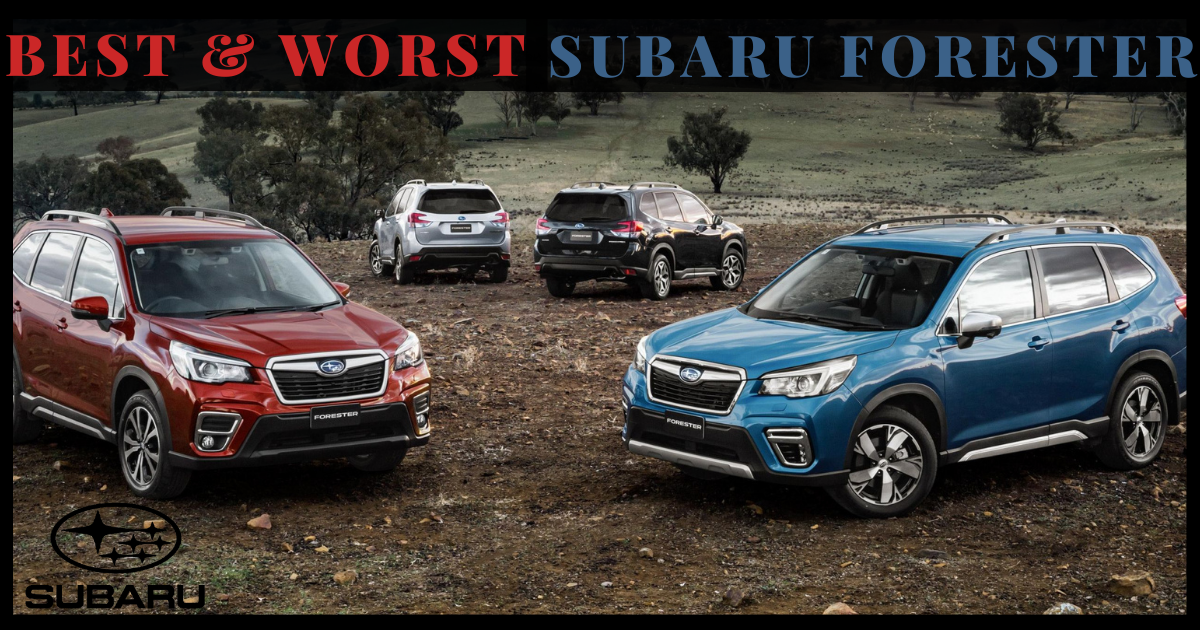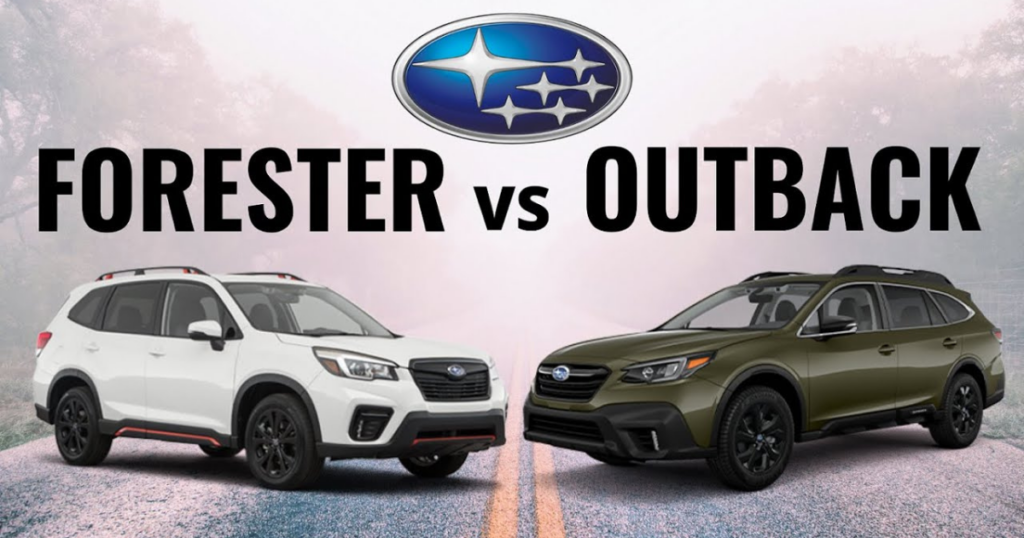
When it comes to tackling the great outdoors with style and reliability, two names stand out in the realm of adventure vehicles: the Subaru Outback and the Subaru Forester. These two rugged contenders have captivated the hearts of outdoor enthusiasts and families alike, offering versatility, durability, and a sense of adventure in every journey.
The main difference between the Subaru Outback and Forester lies in their shapes, sizes, and classifications. While the Subaru Forester is classified as a compact crossover, competing with popular models like the Honda CR-V, Toyota RAV4, and Mazda CX-5, the Outback is a midsize wagon-like crossover and has fewer direct rivals within its market segment.
In this article, we will have a detailed comparison between the Subaru Outback and Forester, exploring their distinct features, strengths, and weaknesses. Whether you’re an intrepid explorer seeking off-road capabilities or a safety-conscious parent looking for a dependable family vehicle, this article will serve as your comprehensive guide to choosing the perfect Subaru companion for your next adventure.
Subaru Outback Vs. Forester
Let’s have a look at the distinguishing features of both vehicles:
Size and Shape:
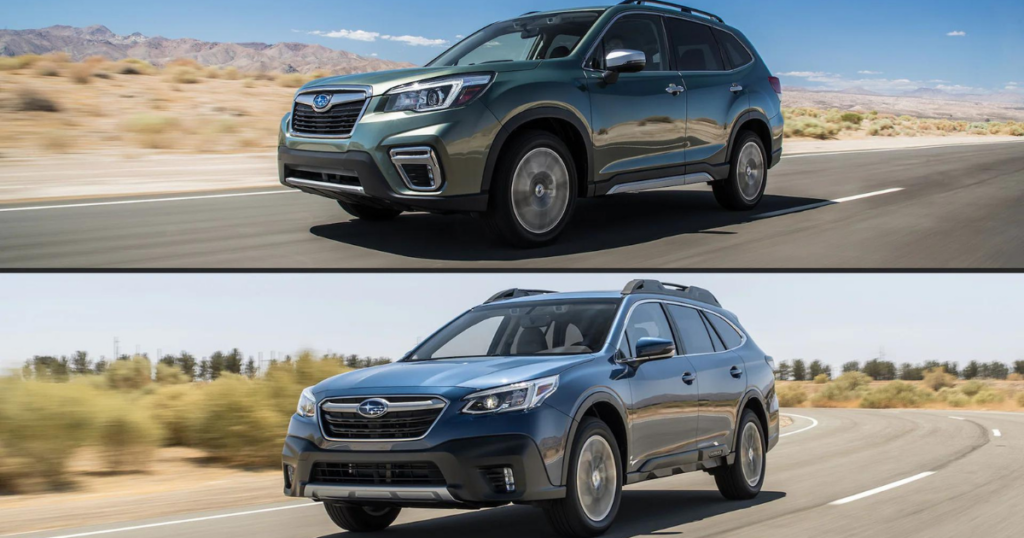
The Subaru Outback and Forester exhibit significant differences in their exterior dimensions. The Outback is 9.2 inches longer and 1.5 inches wider than the Forester. However, it sits closer to the ground by 2.0 inches. In terms of weight, the Outback is heavier, with the base model weighing 3,634 pounds compared to Forester’s 3,449 pounds.
The Outback presents a longer and sleeker profile, akin to a wagon, which translates to a more spacious cargo area and a midsize crossover feel. Its elongated design provides ample room for storage, making it a practical choice for outdoor enthusiasts and families with a need for extra cargo space.
On the other hand, the Forester exhibits a more compact and upright design, typical of a compact SUV. Its boxier shape allows for increased headroom and a higher seating position, offering better visibility and a commanding driving experience.
Engine Power:
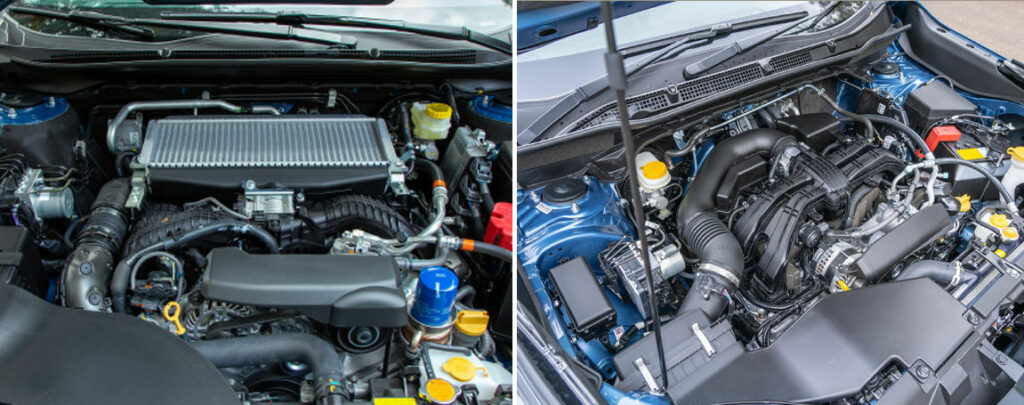
Both the Subaru Outback and Forester utilize the reliable SUBARU BOXER engine and standard all-wheel drive systems. These engines are horizontally positioned, providing a lower center of gravity and a well-balanced blend of power and fuel efficiency for both vehicles.
However, the key distinction lies in the availability of a direct-injection turbocharged engine exclusively offered in certain Outback trims, namely the Onyx XT, Limited XT, Touring XT, and Wilderness.
This turbocharged engine generates 260 horsepower, a significant increase compared to the Forester and the standard Outback engine, which produce 182 horsepower. Moreover, the turbocharged engine delivers 277 pound-feet of torque, surpassing Forester’s 176 pound-feet of torque and the non-turbocharged versions of the Outback, including the Base, Premium, Onyx Edition, Limited, and Touring models.
Ground Clearance:
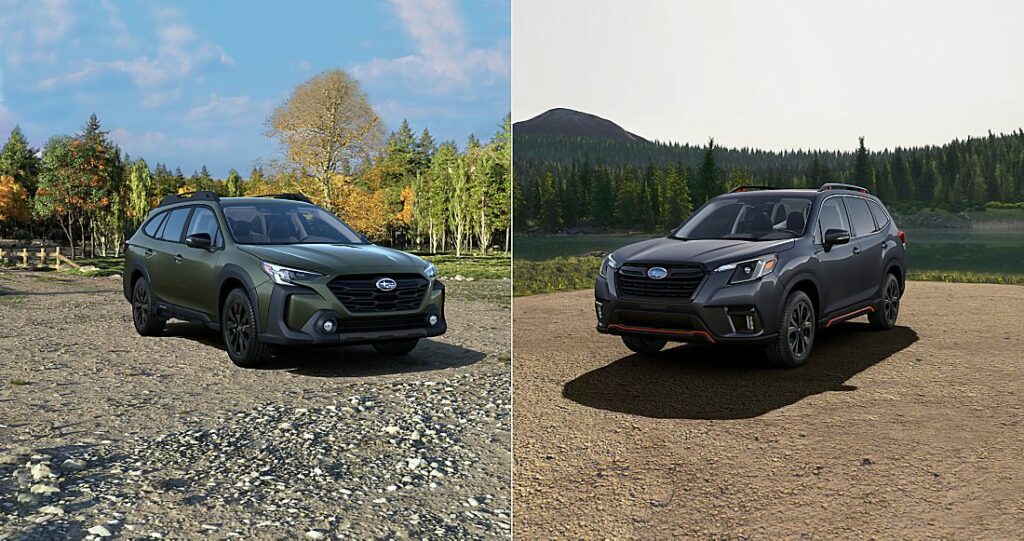
The Subaru Outback and Forester share the same ground clearance height of 8.7 inches in their base models and higher trims like the Limited or Touring. This allows both vehicles to confidently handle rough terrains and adverse weather conditions that many competitors cannot match.
The Outback and Forester’s ability to navigate challenging trails and deep snow sets them apart in their respective segments. However, the differences in ground clearance become apparent when comparing the Outback Wilderness and Forester Wilderness trims.
While both Wilderness models are designed for rugged off-road adventures and feature enhanced clearance and front skid plates, the Outback Wilderness offers a higher ground clearance of 9.5 inches, surpassing the Forester Wilderness, which has a ground clearance of 9.2 inches. This additional ground clearance in the Outback Wilderness further enhances its off-road capabilities, allowing it to conquer more challenging terrains.
Fuel Economy:
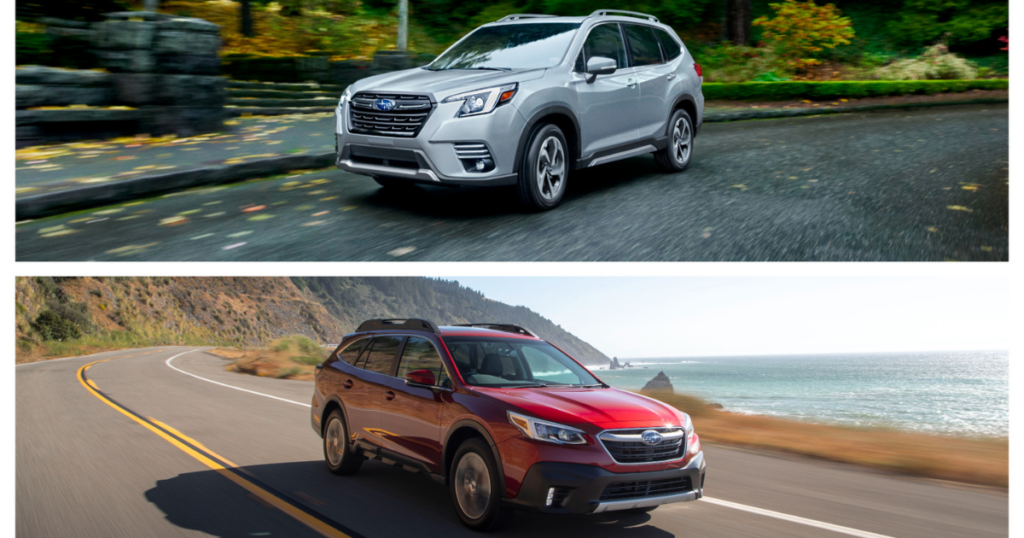
The Forester and Outback exhibit similar fuel efficiency when equipped with the 2.5-liter engine. Both vehicles achieve a comparable rating of 26 mpg in the city, 33 mpg on the highway, and 29 mpg combined in this configuration. However, the fuel efficiency of the Forester Wilderness model slightly decreases to 25 mpg in the city, 28 mpg on the highway, and 26 mpg combined.
On the other hand, if you opt for the turbocharged engine available in the Outback, there is a notable drop in fuel economy. The turbocharged engine is rated at 23 mpg in the city, 30 mpg on the highway, and 26 mpg combined. The Outback Wilderness model with the turbocharged engine experience a further decrease, achieving 22 mpg in the city, 26 mpg on the highway, and 24 mpg combined.
Towing Capacity:
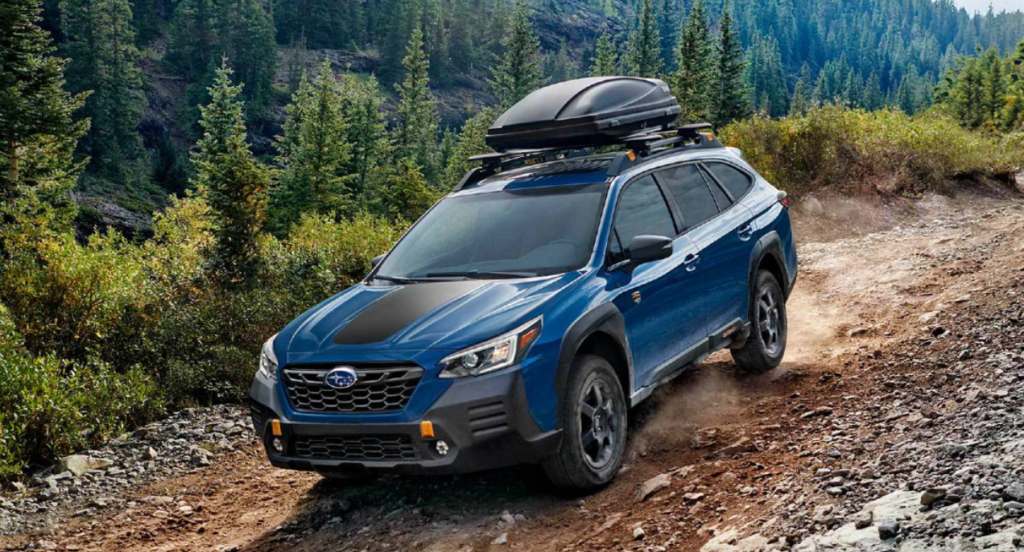
The Outback, with its larger size and stronger powertrain, offers a higher towing capacity compared to the Forester. It has a towing capacity of up to 3,500 pounds when properly equipped. This makes it suitable for towing small trailers, boats, or lightweight camper trailers. The Outback’s robust construction and powertrain enable it to handle towing tasks easily.
On the other hand, the Subaru Forester has a slightly lower towing capacity. It is capable of towing up to 1,500 pounds when properly equipped. While this may not be as high as the Outback’s capacity, it is still sufficient for towing smaller loads such as utility trailers or small recreational equipment.
Cargo Space:

In terms of cabin space, the Subaru Outback has a slight advantage over the Forester. While both vehicles provide ample room for passengers, the Outback offers slightly more total passenger volume. The Forester’s base model has 111.6 cubic feet (107.6 cubic feet for most trims), while the Outback measures 109.0 cubic feet (107.5 cubic feet for models with a moonroof).
There is a small variation in the front legroom, but both vehicles have similar rear legroom, with the Outback featuring 39.5 inches and the Forester at 39.4 inches. When it comes to cargo space, the Outback outshines the Forester.
The Forester has 26.9 cubic feet of cargo room behind the second row (32.5 cubic feet for the Outback), and with the seats folded down, the Forester offers 74.2 cubic feet for the base model (69.1 cubic feet for other trims) compared to the Outback’s 75.6 cubic feet. Despite their dimensional differences, both vehicles ensure ample space for passengers and cargo.
Safety:

The Subaru Outback and Forester prioritize safety, and both models have received commendable safety ratings. The Outback has been recognized as one of the safest SUVs on the market, achieving a 2021 Top Safety Pick+ from the IIHS.
Similarly, the Forester has also earned a five-star overall safety rating from the NHTSA and was awarded the 2021 Top Safety Pick+ by the IIHS. Both vehicles come equipped with Subaru’s EyeSight collection of driver-assist features as standard. This includes advanced safety technologies such as adaptive cruise control, automatic emergency braking, automatic high beams, and lane-keep assist.
Additionally, the Forester offers additional safety features like automatic emergency steering to help prevent collisions at lower speeds, blind-spot detection with lane change assist, and rear cross-traffic alert.
Luxury Features:
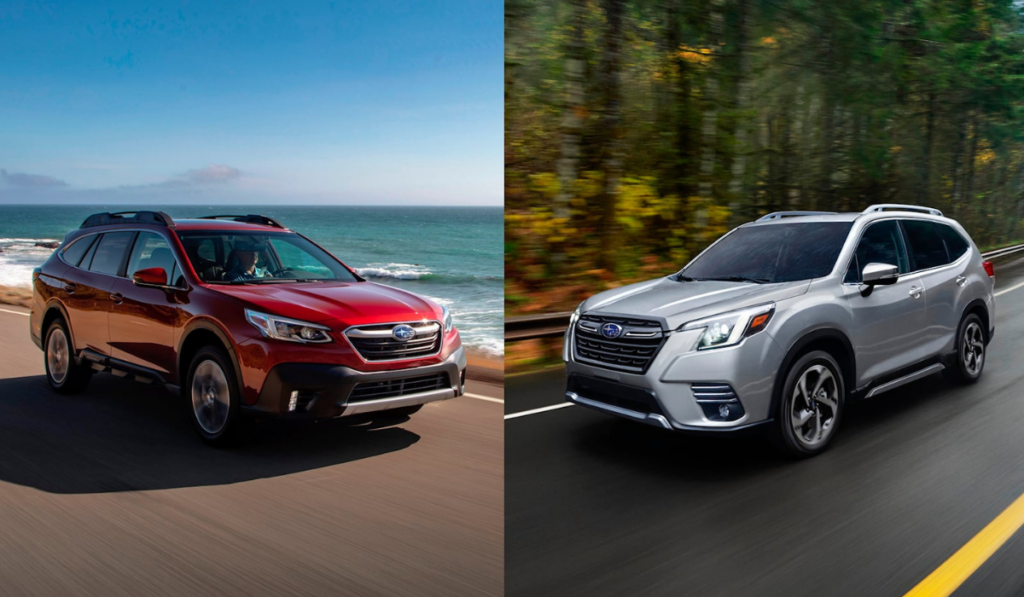
The Subaru Outback comes at a slightly higher price point than the Forester, offering additional luxury-oriented features. For instance, the Outback provides an optional 11.6-inch touchscreen, which is significantly larger than the Forester’s optional 8.0-inch screen.
Moreover, the Outback goes further by offering ventilated front seats, luxurious Nappa leather upholstery, and standard leather-trimmed upholstery. While the Forester also offers a leather interior and similar features, they may not be as updated or advanced as those found in the Outback. With a larger interior display and a more powerful engine, the Outback excels in luxury compared to the Forester.
Trims:

Both models offer a range of trims to cater to different preferences and needs.
Subaru Outback trims:
- Base
- Premium
- Onyx Edition
- Limited
- Touring
- Onyx Edition XT
- Wilderness
- Limited XT
- Touring XT
Subaru Forester trims:
- Base
- Premium
- Sport
- Wilderness
- Limited
- Touring
Price:
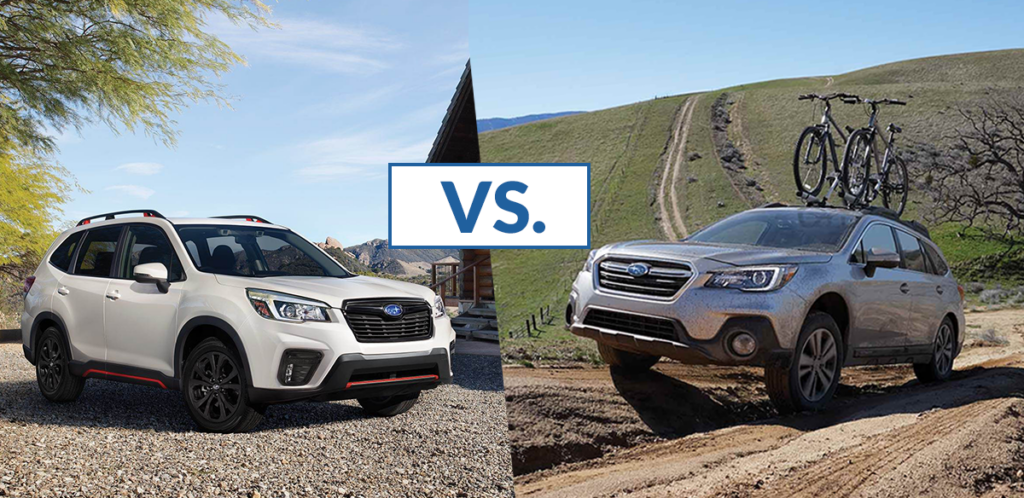
The Subaru Forester is available at a more affordable price compared to the Outback. The base model of the 2022 Forester starts at $27,070, making it $2,550 cheaper than the base 2023 Outback, which starts at $29,620. The price difference becomes more significant when looking at the highest trim levels.
The top-of-the-line Forester Touring is priced at $37,170, while the 2023 Outback Touring XT reaches a higher price point of $43,520. This pricing contrast allows consumers to choose between the Forester and Outback based on their budget and desired level of luxury and features.
Frequently Asked Questions:
Here are some frequently asked questions about Subaru Outback Vs. Forester:
Do Outback and Forester both have all-wheel drive?
Both the Outback and Forester come equipped with Symmetrical All-Wheel Drive as standard across all trim levels, ensuring exceptional capability and traction.
What kind of transmissions is available for Outback and Forester?
Both vehicles utilize the Subaru Lineartronic Continuously Variable Transmission (CVT) as their standard transmission. Additionally, they offer manual modes with paddle shifters, allowing drivers to have more control and precise engine management.
What type of warranties do the Outback and Forester have?
Both come with the Subaru Limited Factory Warranty, which provides three years or 36,000 miles of limited bumper-to-bumper coverage, whichever comes first. Additionally, they have the Powertrain Warranty, covering the engine, transmission, and all-wheel drive for a duration of five years or 60,000 miles, whichever comes first.
Conclusion:
In conclusion, the battle between the Subaru Outback and Forester presents a compelling choice for consumers seeking distinct advantages in their crossover SUV. The Outback stands tall with its rugged demeanor and exceptional off-road capabilities. On the other hand, the Forester provides a more affordable option with similar safety and standard features.
Whether it’s the Outback’s spaciousness and towing capability or Forester’s affordability and versatility, both vehicles embody Subaru’s commitment to quality, reliability, and all-weather performance. The choice comes down to personal needs and preferences. In this article, we have outlined all the differences and similarities so you can easily select what suits you best.




